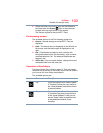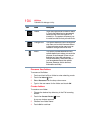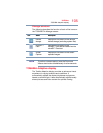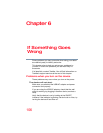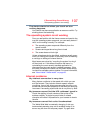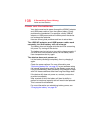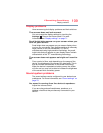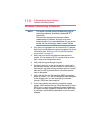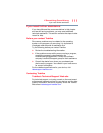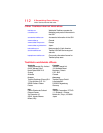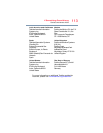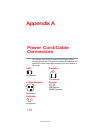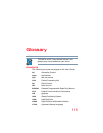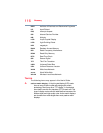
110
If Something Goes Wrong
Wireless networking problems
Wireless networking problems
This section provides general troubleshooting tips for
networking problems, specifically wireless (Wi-Fi
®
)
networking.
The terms and concepts used assume a basic
understanding of networks, and may be for more
advanced users. If you need assistance or if you are not
familiar with the terminology, please contact Toshiba.
❖ Your device is equipped with an internal Wi-Fi
®
adapter.
Verify that your Wireless connection is enabled. For more
information, see “Setting up Wi-Fi® and Bluetooth®
connections” on page 41.
❖ Verify that your device can detect access points or
routers. If it can detect a Wi-Fi
®
access point or router
then it may be a configuration issue.
❖ Verify that the signal strength is good.
❖ If another device is on the same network, verify that it
has network access, and can connect to the Internet. If,
for example, the other device cannot browse to a public
Web site, the ISP’s (Internet Service Provider) service
may be disrupted.
❖ Verify that the Service Set Identifier (SSID), or network
name, is correct
- i.e., that it matches the SSID assigned
to the access point you are attempting to connect
through. SSIDs are case-sensitive.
❖ If you have enabled any security provisions (closed
system, MAC address filtering, Wired Equivalent Privacy
[WEP], etc.), check the access point vendor's Web site
for recent firmware upgrades. Problems with WEP keys,
in particular, are frequently addressed in new firmware
releases.
NOTE




